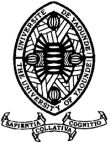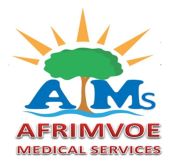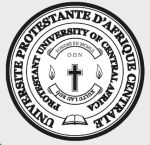Complications Following Traditional Treatment for Limb Fractures in Bouaké
Complications du Traitement Traditionnel des Fractures des Membres à Bouaké
DOI:
https://doi.org/10.5281/hra.v2i8.5937Keywords:
bone infection, complications, fractures, traditional treatmentAbstract
RESUME
Introduction. Dans les pays en développement, le traitement traditionnel pour les fractures de membre est une pratique très répandue. Cette pratique est à l’origine de nombreuses complications. L’objectif de cette étude était de décrire le profil épidémiologique des patients et les complications dans les suites du traitement traditionnel pour une fracture de membre. Méthodologie. Il s’agissait d’une étude prospective et descriptive réalisée au service de traumatologie du centre hospitalier et universitaire de Bouaké entre janvier 2019 et juin 2021 portant sur les patients admis pour une complication après traitement traditionnel d’une fracture de membre. Les paramètres étudiés étaient les caractéristiques socio-démographiques, la lésion initiale, les raisons du choix du traitement traditionnel et les complications. Résultats. Au cours de la période d’étude, 1760 patients ont été pris en charge. Les complications après un traitement traditionnel pour une fracture de membre avaient concerné 137 d’entre eux soit une prévalence hospitalière de 7,8%. L’âge moyen était de 41,2±17,6 ans [16 ans et 98 ans] pour un sex ratio de 3,28. L’activité socio-professionnelle était dominée par les cultivateurs (30,7%). Les patients provenaient fréquemment d’une zone rurale (60,7%) et ne possédait pas d’assurance maladie (94,2%). Les patients non scolarisés étaient les plus représentés (50,7%). La lésion initiale était une fracture ouverte dans 51,7%. Les raisons évoquées pour le recours au traitement traditionnel étaient dominées par le manque de moyens financiers (43,8%). Les complications les plus fréquentes étaient l’infection osseuse (35,1%) et les cals vicieux (25,2%). Conclusion. Les complications du traitement traditionnel des fractures de membre étaient fréquentes et parfois graves. Une meilleure accessibilité aux soins modernes pourrait limiter ces complications.
ABSTRACT
Introduction. In developing countries, traditional treatment for limb fractures is a widespread practice. This practice leads to many complications. The objective of this study was to describe the epidemiological profile of patients and complications following traditional treatment for a limb fracture. Methodology. This was a prospective and descriptive study conducted at the trauma service of the teaching hospital in Bouaké between January 2019 and June 2021 on patients admitted for complications after traditional treatment for a limb fracture. The parameters studied were socio-demographic characteristics, initial injury, reasons for choosing traditional treatment, and complications. Results. During the study period, 1760 patients were treated. Complications after traditional treatment for a limb fracture affected 137 of them, with a hospital prevalence of 7.8%. The average age was 41.2 ± 17.6 years [16 years and 98 years] with a sex ratio of 3.28. The most common socio-professional activity was farming (30.7%). Patients often came from rural areas (60.7%) and did not have health insurance (94.2%). The most represented group were the non-educated patients (50.7%). The initial injury was an open fracture in 51.7% of cases. The reasons given for choosing traditional treatment were primarily due to lack of financial means (43.8%). The most common complications were bone infection (35.1%) and malunions (25.2%). Conclusion. Complications of traditional treatment for limb fractures were frequent and sometimes serious. Better access to modern healthcare could help limit these complications.
References
Kouassi KJE, Yao LB, Séry BJLN, M’bra KI, Krah KL, Kodo M. Epidémiologie des fractures traumatiques de membre au CHU de Bouaké. Rev int sc méd 2019;21(2):130-4
Yao LB, Akobé AJR, M’Bra KI, Sery BJLN, Kouassi KJE, Kouassi AAN et al. Les raisons du refus et abandon de soins aux urgences chirurgicales du Centre Hospitalier et Universitaire de Bouaké, Côte d’Ivoire. Pan African Medical Journal. 2021;38(291). https://doi:10.11604/pamj.2021.38.291.22340
Dada A, Giwa SO, Yinusa W, Ugbeye M, Gbadegesin S. Complications of Treatment of Musculoskeletal Injuries by Bone Setters. WAJM 2009;28(1): 333–7.
Mensah E, Chigblo P, Ndeffo K, Tidjani IF, Lawson E, Hans-MoeviAkue A. Traitement des complications du traitement traditionnel des fractures dans un service de chirurgie générale. Afr J Orthop Trauma 2016;1(2):132-6.
Mensah E, Tidjani IF, Chigblo P, Lawson E, Ndeffo K, Hans-Moevi Akué A. Aspects épidémiologiques et lésionnels des complications du traitement traditionnel des fractures de membres à Parakou (Bénin). Rev de Chir Orthop et Traumatol 2017;103:330-4. https://doi.org/10.1016/j.rcot.2017.01.018
Aderibigbe SA, Agaja SR, Bamidele JO.Determinants of utilization of traditionalbone setters in Ilorin, North Central Nigeria. J prev med hyg 2013;54: 35-40.
Tékpa BJD, Ngongang OGF, Keïta K, Alumeti D, Sané A.D, Diemé CB, Seye SIL. Gangrène de membre à la suite d’un traitement traditionnel de fractures par attelle en bambou chez l’enfant à l’Hôpital régional de Kaolack (Sénégal). Bull Soc Pathol Exot. 2013,106:100-3. https://DOI 10.1007/s13149-013-0278-9
Zulfiqar Z, Bubak SZ, Jahangir A, Ali Z. Frequency of complications among trauma patients treated by traditional bone setters. JSZMC 2018;9(3): 1456-8
Mathieu L, Bertani A, Chaudier P, Charpail C, Rongiéras F, Chauvin F. Management of the complications of traditional bone setting for upper extremity fractures: The experiences of a French Forward Surgical Team in Chad. Chir de la Main 2014 ;33 :137-43 http://dx.doi.org/10.1016/j.main.2014.01.005
Chowdhury MA, Khandker HH, Ahsan K, Mostafa DG. Complications of fracture treatment by traditional bone. Dinajpur Med Col J 2011;4:15-9.
Souna BS, Djibo H, Danhaoua AM, Gbaguidi F. Les limites du traitement traditionnel des fractures des membres (JIBIRA) : à propos de 61 patients opérés à Niamey. Med Afr Noire 2009;56(12):652-6.
Tobomè SR, Hodonou AM, Dadjo AY, Ahononga BC, Haoudou R, Gayito RC, et al. Amputations des membres dans un hôpital de zone du Nord-Bénin : à propos de 122 cas. Med Afr Noire 2015;62:165-72.
Yao LB, Sery BJLN, M’bra KI, Kouassi KJE, Krah KL, Kouassi AAN, Kodo M. Lésions ostéo-articulaires traumatiques négligées des membres. J Afr Chir Orthop Traumatol 2018;3(1):21-5.
Odatuwa-Omagbemi DO, Adiki TO, Elachi CI, Bafor A. Complications of traditional bone setters (TBS) treatment of musculoskeletal injuries: experience in a private setting in Warri, South-South Nigeria. Pan African medical journal 2018,30:189. https://doi:10.11604/pamj.2018.30.189.15730
Ekere AU, Echem RC. Complications of fracture and dislocation treatment by traditional bone setters: A private practice experience. Nigerian Health Journal 2011,11(2):59-66.
Memon FA, Saeed G, Fazal B, Bhutto I, Laghari M, Siddique KA, Shaikh AR. Complications of fracture treatment by traditional bone setters at Hyderabad. J Pak Ortho Asso 2009,21(2):58-64.
Omololu AB, Ogunlade SO, Gopaldesoni VK. The practice of traditional bone setting: training algorithm. Clin Orthop 2008;466(10):2392-8.
Odatuwa-Omagbemi DO, Enemudo RET, Enamine SE, Esezobor EE. Traditional bone setting in the Niger Delta region of Nigeria. Nig J Med 2014; 23(2):157-61.
Nabeel D, Nausheen N, Kamran Khalid B. Musculoskeletal injuries by bone Setters. Professional Med J July-Aug 2012;19(4):446-8.
Traore T, Toure L, Diassana M, Malle K, Diallo S, Diallo A, Hans-Moevi A. Amputation des Membres suite au Traitement Traditionnel à l’Hôpital de Mopti (Mali). Health Sci. Dis ; 22 (4):76-80
Dao S, Oumar AA, Maiga I, Diarra M, Bougoudogo F. Tétanos en milieu hospitalier à Bamako, Mali. Med Trop 2009;69:485-7
Downloads
Published
How to Cite
Issue
Section
License
Copyright (c) 2024 Kouassi Aya Adélaïde Natacha, Krah Koffi Léopold, Yao Loukou Blaise, Akobé Achié Jean Régis, Soumahoro Ibrahim, Kodo Michel

This work is licensed under a Creative Commons Attribution-NoDerivatives 4.0 International License.
Authors who publish with this journal agree to the following terms:
- Authors retain copyright and grant the journal right of first publication with the work simultaneously licensed under a Creative Commons Attribution License CC BY-NC-ND 4.0 that allows others to share the work with an acknowledgement of the work's authorship and initial publication in this journal.
- Authors are able to enter into separate, additional contractual arrangements for the non-exclusive distribution of the journal's published version of the work (e.g., post it to an institutional repository or publish it in a book), with an acknowledgement of its initial publication in this journal.
- Authors are permitted and encouraged to post their work online (e.g., in institutional repositories or on their website) prior to and during the submission process, as it can lead to productive exchanges, as well as earlier and greater citation of published work










